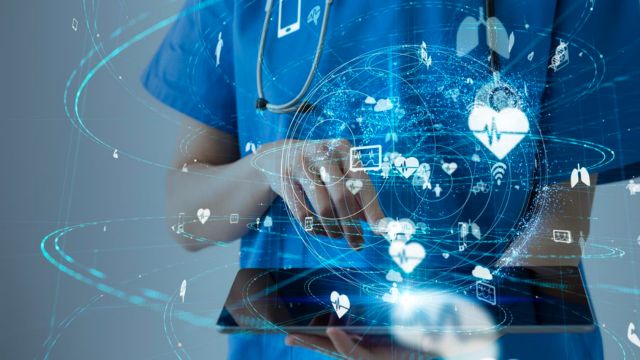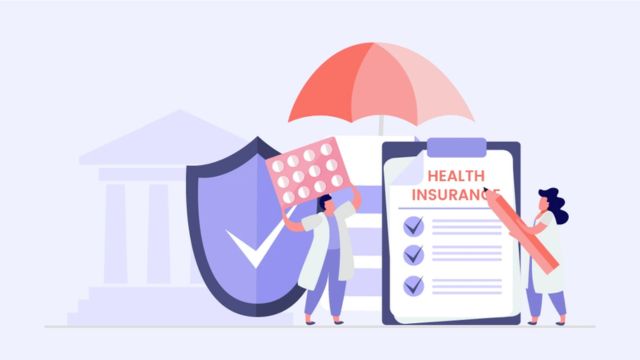The Global Fund to Fight AIDS, Tuberculosis, and Malaria (Global Fund) has led the fight against three major infectious illnesses. The Global Fund has used digital health solutions to improve health outcomes, streamline operations, and improve crucial service delivery to save lives, eliminate inequities, and improve global health. Innovative strategies to track, treat, and prevent chronic diseases in varied and often hard-to-reach populations are being made possible by digital health technologies.
How Digital Health Fights AIDS, Tuberculosis, and Malaria

1. Improved Disease Monitoring
Digital health technologies boost disease surveillance and monitoring, helping battle AIDS, TB, and malaria. Effective interventions require early detection and continual disease tracking, which digital tools have simplified.
The Global Fund has promoted electronic health records (EHRs) to help doctors track patient data and treatment progress. These tools let health personnel track trends, manage patient treatment, and record malaria, TB, and HIV/AIDS diagnoses in real time. Disease monitoring now uses mobile health (mHealth) apps to access data from rural places with poor internet availability. This integration creates accurate, up-to-date disease maps for public health choices, response tactics, and resource distribution.
2. Telemedicine and Virtual Care for Remote Communities
Geography hinders healthcare access in many places, including sub-Saharan Africa, Southeast Asia, and others with high disease burdens. Telemedicine and telehealth systems are closing the gap by allowing remote doctor-patient conversations.
Effective care of chronic illnesses like HIV/AIDS and TB requires regular consultations. Telemedicine lets patients see doctors without travelling far. Healthcare experts are scarce in some locations, making this vital. Global Fund-supported initiatives can deliver virtual health consultations, follow-up care, and educational support to patients via telehealth, ensuring continuity of care without geographical limits.
Digital health systems also enable remote monitoring of TB, malaria, and AIDS patients. ART patients for HIV can be managed using digital platforms that track drug adherence and health progress. Healthcare providers can immediately address difficulties and change treatment approaches.
3. Data-driven resource allocation and decision-making
Effective big data analytics is another game-changing component of digital health solutions. The Global Fund and its partners use data-driven decision-making tools to optimise resource allocation and ensure the correct interventions reach the most needy.
Health authorities can predict epidemics, track disease movement, and efficiently deploy medications, diagnostic kits, and health professionals using data analytics. The Global Fund uses geospatial technologies and disease-tracking platforms to detect malaria hotspots and target resources before outbreaks. These tools also evaluate therapeutic efforts, offering feedback for improvement.
Phone apps can track bed net use, pesticide resistance, and treatment efficacy, making data analytics useful in malaria control. The data also helps detect novel malaria transmission patterns, enabling more targeted and effective prevention.
4. mHealth and Treatment Adherence
Keeping people on therapy is a major difficulty in fighting AIDS, TB, and malaria. Non-adherence can cause drug resistance, treatment failure, and infection. The Global Fund has financed various mHealth efforts that use mobile phones to remind patients to take their medications, track their symptoms, and deliver instructional information.
Video directly observed treatment (vDOT) programs have been financed by the Global Fund to fight TB. Patients film themselves taking drugs on video with vDOT, which doctors review. Despite distance, lack of supervision, and stigma, this digital solution helps TB patients follow their treatment plan.
SMS reminders help malaria patients take their antimalarials on schedule. Online technologies are extremely successful in reaching those who are hard to reach due to location or education.
5. Digital Education and Awareness Tools
Digital health solutions treat, monitor, and educate communities about preventive. The Global Fund funds digital efforts to fight AIDS, TB, and malaria. These campaigns spread health information via social media, smartphone apps, and interactive websites.
Radio programs, mobile health videos, and infographics have been effective in raising awareness about how to prevent these diseases in regions with low literacy rates or where traditional health education is difficult to implement. The Global Fund works with local governments and organisations to create culturally relevant, local-language content to reach those who need it.
6. Overcoming Digital Health Issues
Although digital health solutions are effective, issues remain. Internet connection in remote regions is a major obstacle. The Global Fund and its partners are improving infrastructure and mobile connectivity in underserved areas. Some places lack digital literacy, thus healthcare providers need digital tool training.
Despite these obstacles, digital health technologies can help the Global Fund end AIDS, tuberculosis, and malaria. Digital health is making healthcare more effective, accessible, and equitable by integrating innovation with global health expertise.
Conclusion
Digital health solutions are increasing disease surveillance, patient care, medication adherence, and community understanding to battle AIDS, tuberculosis, and malaria. The Global Fund’s support for these digital health initiatives improves healthcare delivery and ensures no one is left behind, regardless of location. With digital solutions to combat these deadly diseases, world health will improve as technology advances.
We can eliminate these diseases faster and create a healthier, fairer world for future generations by employing digital health tools.
Unlock the power of digital solutions with Digital India MIB! Stay informed, access key government schemes, and explore innovative health and wellness initiatives. Join us in empowering communities with technology-driven solutions. Visit now to learn more and make a difference in your life and society!













